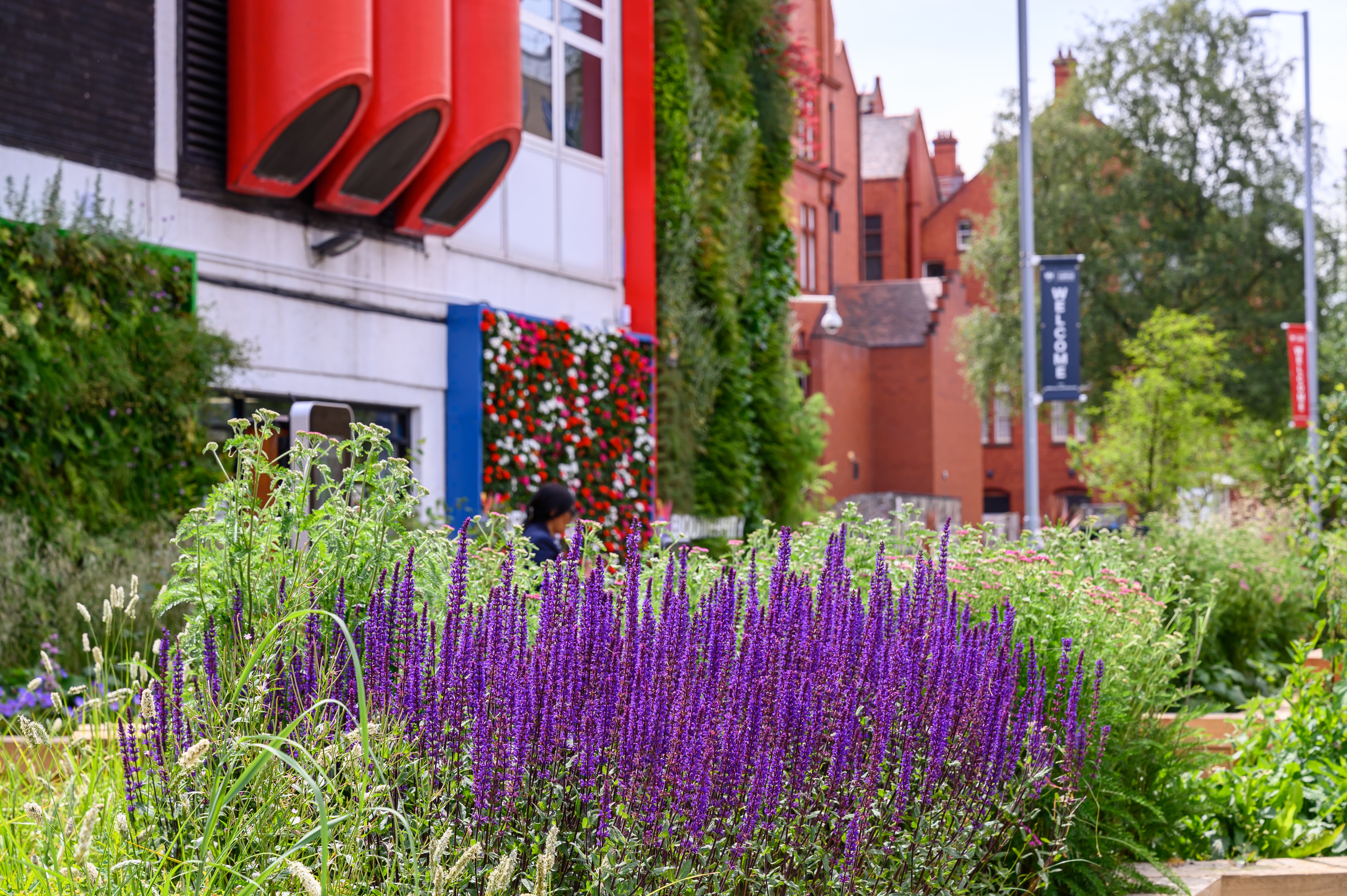The International Union for Conservation of Nature (IUCN) defines Nature-based Solutions as “actions to protect, sustainably manage, and restore natural or modified ecosystems, that address societal challenges effectively and adaptively, simultaneously providing human well-being and biodiversity benefits”.
Nature-based Solutions

Nature-based Solutions are an essential component of the global effort to achieve the objectives of the Paris Agreement on Climate Change and the Sustainable Development Goals (SDGs). They are a vital component of decarbonization, reducing climate change risks and establishing climate resilient cities and regions.
In an urban context, Nature-based Solutions can address challenges exacerbated by growing populations, from improving public health to revitalizing public spaces and reducing energy costs and pollution. For example, local governments can implement green roofs, rain gardens and other green infrastructure to help cities become more resilient to extreme weather events, support urban gardens to improve food security, and increase green and blue spaces that improve the quality of life for all citizens.
The COVID-19 pandemic requires all levels of government to re-think previous recovery strategies. Nature-based Solutions have both immediate and long-term benefits for economic development and stability, community health and well-being, and climate change resilience and biodiversity conservation.
Below are 5 Nature-based Solutions being implemented by local governments in partnerships with NGO’s, civil society and the private sector.
The Ignition Project, Greater Manchester
The IGNITION project is working at a city-region level to develop the evidence necessary to prove the value of NBS and build confidence in the financial returns it can provide. At the centre of the project is the Living Lab at the University of Salford: an innovative, demonstration site that brings together NBS in an integrated system. The structure is the first cohesive NBS Living Lab in the world with a rain garden, green wall, green roof, and sustainable drainage trees laid out across two university buildings to provide a replicable model for businesses and local authorities.
Mexico City’s Green Challenge is an initiative involving the mass planting of trees and other plants in urban and peri-urban areas. The objective is to improve the multiple ecosystem services of natural areas through reforestation actions. By making new green areas in the city, the project encourages the social use of public space and other environmental benefits. These nature-based solutions are contained in the local government´s strategies to address climate change and for the conservation of biodiversity.
The Lima Ecological Infrastructure Strategy (LEIS)
The Lima Ecological Infrastructure Strategy (LEIS) has been developed within the Lima Water (LiWa) research project “Sustainable water and wastewater management of urban growth centres coping with climate change”. The aim of LEIS is to integrate, in a participatory way, urban landscape planning and design with water management to support the urban water cycle. This includes the treatment and reuse of wastewater to increase access to green public spaces and ecosystem services in the city, by taking into account different ecological, environmental, socio-economic and cultural landscapes.
Copenhagen Climate-Resilient Neighbourhood strategy
The Copenhagen Climate-Resilient Neighbourhood strategy represents an innovative model for climate adaptation, driven by efforts to engage and empower citizens in their own neighbourhood. Through this initiative, "green" and "blue" solutions are being implemented at ground level to better manage the flow of rainwater in urban spaces and subsequently improve the neighbourhood's resilience against cloudburst damage. The strategy introduces bicycle paths that act as storm water channels, as well as water towers and canals that carry water from the neighbourhood to the harbour.
Portoviejo Park is part of an interconnected system of green and public spaces that the City government aims to build along the Portoviejo River to reduce flood risk. The Park’s design incorporates ecosystem-based adaptation (EbA) solutions such as the recovery and repurposing of riverbanks as floodable recreational areas and the regeneration of an abandoned meander as a wetland. The regenerated wetland functions as a stormwater retention tank, while simultaneously providing a valuable ecosystem that has attracted a wide variety of fauna. The City government has undertaken the challenge of reconstruction and economic revitalisation as an opportunity to generate new public spaces, revitalise the city centre, and address the increasing flood risks that were threatening this part of the city.
For more programmes and policies related to Nature-based Solutions search the use data base by SDG 13 or topic – climate adaptation and climate mitigation: https://use.metropolis.org/search